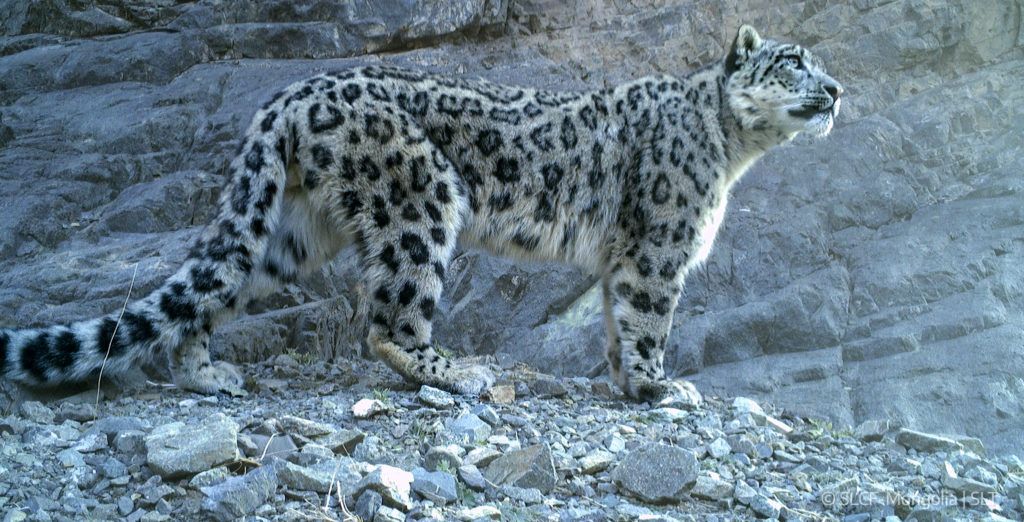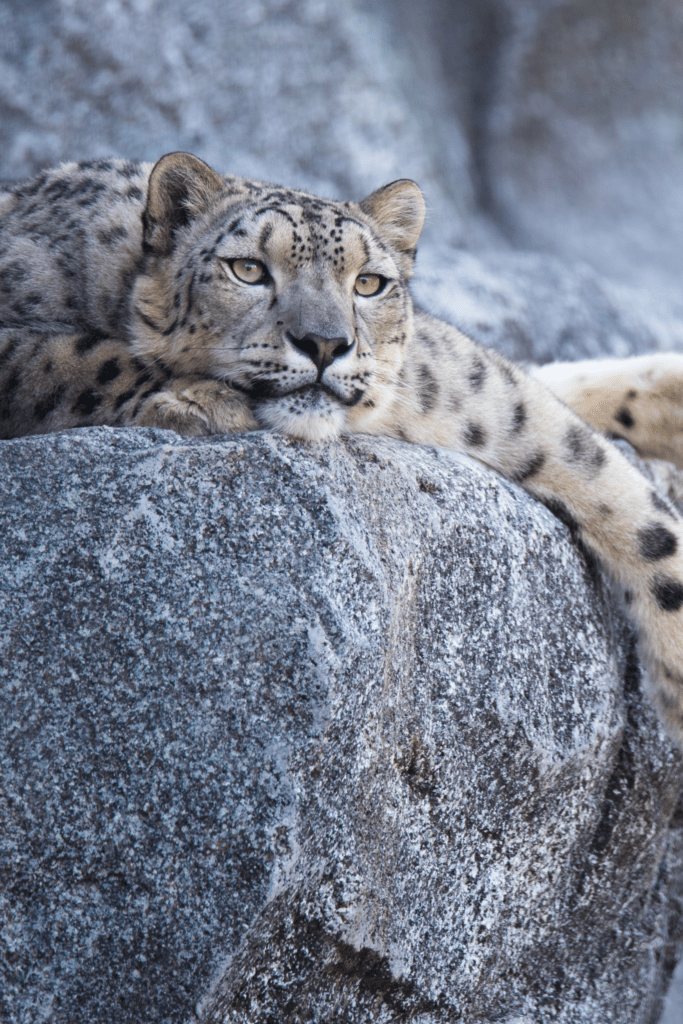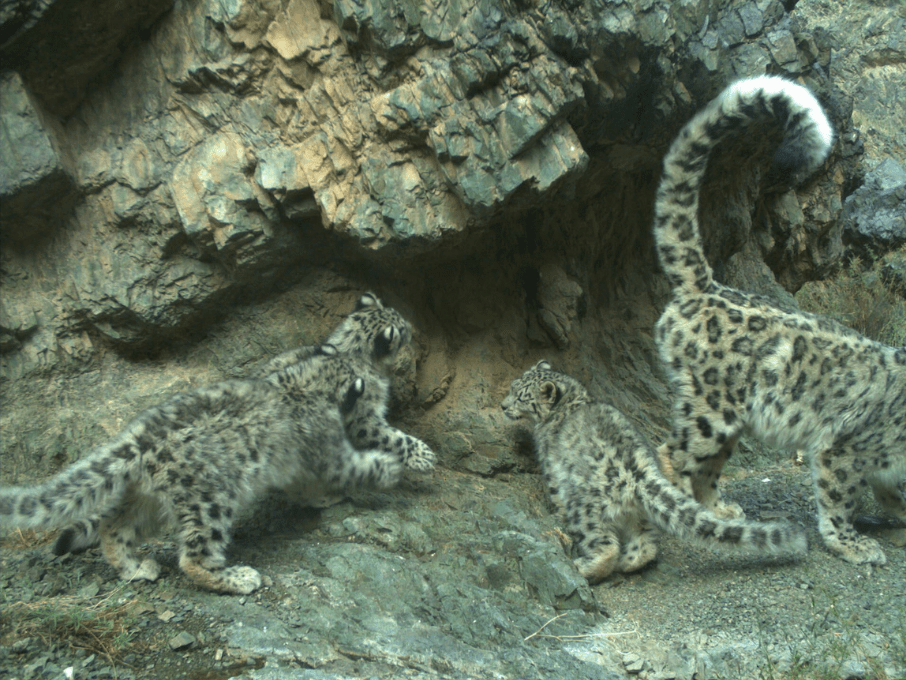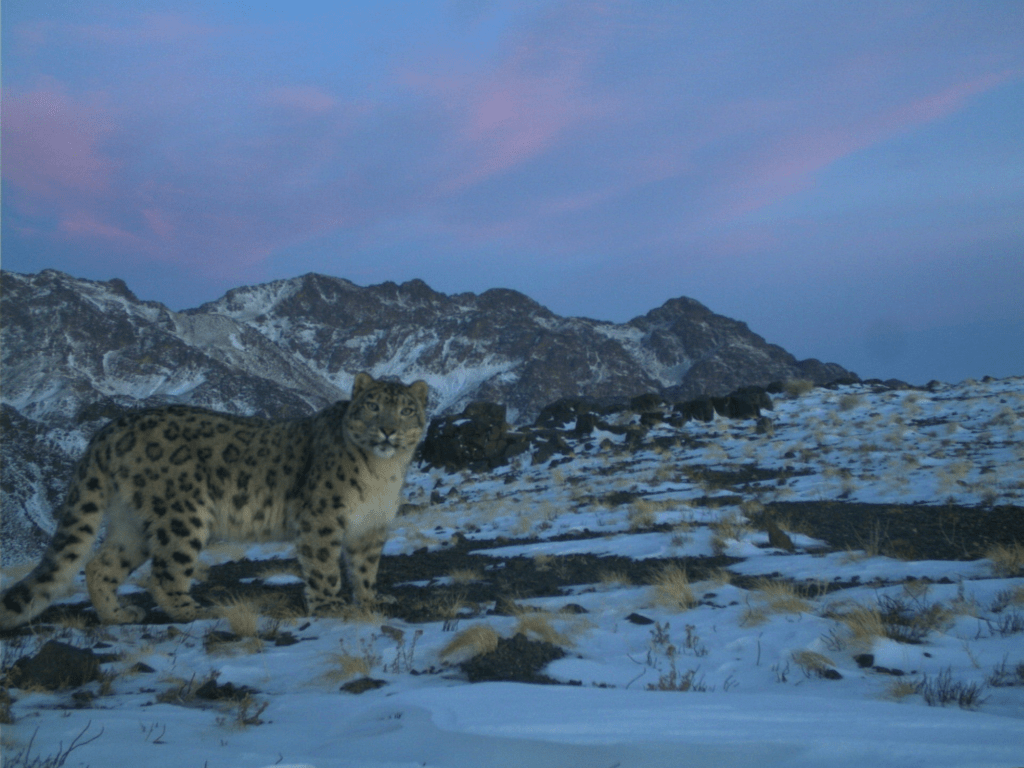Track a snow leopard
I'll help snow leopards“Snow leopards are beautiful and powerful creatures. They are very rare and incredibly hard to find, yet they are the kings of the mountains where they live. In many ways they are an embodiment of the Mongolian spirit!”
– Bayara Agvaantseren, Director, Snow Leopard Conservation Foundation
What’s the problem?
Solitary by nature, snow leopards live across twelve countries in the mountain ranges of Central Asia. They’re perfectly adapted to these steep, rugged environments and roam areas up to 220 square kilometres. But their habitat’s shrinking fast as their land is exploited for mining. This forces snow leopards to live closer to humans, exposing them to poaching for their fur and body parts, as well as retaliation from herders who fear for their livestock. Climate change also poses an increasing risk of shrinking the alpine zone that snow leopards prefer to inhabit. The threat to these incredible big cats is extreme.
With as few as 3,500 remaining in the wild, snow leopards are vulnerable to extinction.

How do GPS collars help?
Snow leopards are one of the world’s most elusive and least understood cats, and much of what we know about them today is thanks to camera traps and tracking collars. These technologies are vital to deepening our understanding of these magnificent cats, and ensuring they have a future in the wild.
Fortunately, this year, the Mongolian government granted our team permission to collar three snow leopards. This will help us understand important details such as females’ breeding intervals and litter sizes, roaming patterns, interactions between wildlife and humans, the impacts of climate change and how long they live in the wild.

When you donate to help us track snow leopards, you’ll receive a welcome pack with:
- A supporter certificate
- A snow leopard fact sheet
- A spotlight on some of the snow leopards in the nature reserve
If you give a regular gift, in addition to your welcome pack, we’ll send you:
- Updates from scientists on the ground in Mongolia
- Exclusive camera trap footage
- Information about the snow leopards being collared as part of this programme
- Our supporter magazine, Wildlife World, twice a year
Can you protect snow leopards in danger by sponsoring a GPS collar?
Image Credit Alexander Oehrle
Who do we work with?
Our conservation partner is Bayara Agvaantseren, a local to the region who’s been fighting for snow leopards since the 1990s. Tost, in South Gobi, Mongolia, is one of the most important snow leopard habitats in the world. In 2016, thanks to Bayara’s hard work and leadership, Tost was declared a nature reserve exclusively for the protection of snow leopards – the first of its kind in Mongolia. It’s a wonderful and significant accomplishment that we’re so proud to have funded. Supported by PTES, in the last five years Bayara’s team has also successfully:
- expanded the reserve by 1,634 km2
- revoked all mining licenses
- set up a committee to oversee a strategic management plan for snow leopards
- trained seven community rangers, one from each Tost herder community, to patrol for illegal activities and monitor wildlife in Tost

Over the next five years, in addition to conducting camera trap surveys and following three snow leopards as they traverse their mountain habitat, we’ll support and strengthen the reserve’s management team, keeping the reserve free from illegal mining and protect the snow leopards from poaching. There are currently ten rangers covering the park, including community rangers from each of the seven local herder communities. Bayara’s team is training them to patrol the entire reserve throughout the year, monitor wildlife, carry out snow leopard population surveys and record evidence of illegal hunting and mining. They’re also being trained to track and monitor snow leopard activity within the reserve. Much of this work will be fully supported – or heavily aided – by camera trap footage and GPS collar data.
When you donate today, you’ll help our conservation team keep snow leopards safe and become part of this exciting initiative to gain deeper insight into the lives of these mysterious and majestic creatures.
Not ready to donate just yet?
You can still stay up to date on all things wildlife by signing up to our e-newsletter.
Please note there is not a specific snow leopard tied to your donation. Funds raised through this campaign will support the GPS collaring of three snow leopards.

Header image credit Emmanuel Keller

